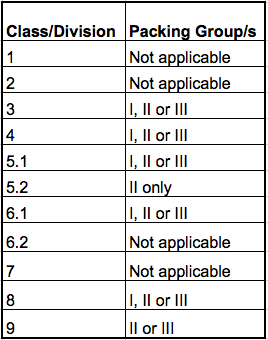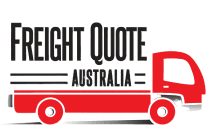Dangerous Goods
Transport Australia
Get A Freight Quote Online!
Our Freight Services
Palletised Freight
Bulky Items
Need something delivered ASAP?
What are ‘Dangerous Goods’?
By definition, Dangerous Goods are substances that are corrosive, flammable, explosive, spontaneously combustible, toxic and oxidising or water reactive. Hazardous goods freight should not be taken lightly as these goods can be deadly and can seriously damage property and the environment. Transporting Dangerous Goods is allowed, but it’s crucial to ensure safe shipping, storage and handling across Australia. Additionally, displaying the appropriate hazardous goods labels is required under the Dangerous Substances Act.
Dangerous Goods can be liquid, solid, bulk or gases. Petrol, LPG, paints, pesticides and acids are examples of commonly used Dangerous Goods. They are defined in the Dangerous Goods Act 1985 and are classified in the Australian Code for the Transport of Dangerous Goods by Road and Rail (Dangerous Goods Code) according to their common hazardous properties.
Freight Quote Australia
Dangerous Goods
Courier Service
Dangerous goods transport companies have an obligation to the community to transport its hazardous freight responsibly. Systems need to be in place to ensure responsible storage and handling. Everyone working for dangerous goods couriers are obliged to follow the safety procedures in place. Shortcuts can be fatal.
At Freight Quote Australia we take responsibility seriously and our company does not transport dangerous goods freight without a prior written agreement. Please get in touch with any enquiries and to arrange dangerous goods cargo, freight shipping, or a dangerous goods courier service. We can also provide recommendations depending on your task.
Dangerous Goods Classification for Australia
How many classes of dangerous goods (DG) are there?
Each substance or article of Dangerous Goods named in the Code is assigned to a particular Class relating to its primary hazardous property. There are 9 classes that you should know for labelling before you transport them across Australia.
The Classes of dangerous goods in Australia and stickers for them are as follows:
Class 1 Dangerous Goods: Explosives
Explosives range from those which are extremely hazardous with a mass explosion hazard such as TNT, Gunpowder and Gelignite etc.

Class 2 Dangerous Goods: Gases; Compressed, Liquified or Dissolved under pressure
Class 2 is subdivided into the following three Divisions:
2.1 Flammable gases i.e. acetylene and most Aerosols.
2.2 Non-flammable, non-toxic gases i.e. helium and oxygen.
2.3 Poisonous gases i.e. chlorine.

Class 3 Dangerous Goods: Flammable Liquids
We will not provide the full list of hazardous goods of the group, but explain the point.
Class 3 includes liquids which can burn and have a flash point (not boiling point) below 60.5°C i.e. acetone and kerosene. Is helium flammable? No, but it is still listed as hazardous freight in Class 2 which includes gases which are compressed, liquified or dissolved under pressure.

Class 1 dangerous goods: Explosives
Explosives range from those which are extremely hazardous with a mass explosion hazard such as TNT, Gunpowder and Gelignite etc.

Class 2 dangerous goods: Gases; Compressed, Liquified or Dissolved under pressure
Class 2 is subdivided into the following three Divisions:
2.1 Flammable gases i.e. acetylene and most Aerosols.
2.2 Non-flammable, non-toxic gases i.e. helium and oxygen.
2.3 Poisonous gases i.e. chlorine.

Class 3 dangerous goods: Flammable Liquids
We will not provide the full list of hazardous goods of the group, but explain the point. Liquids which can burn and have a Flash Point (not boiling point) below 60.5°C i.e. acetone and kerosene. Is helium flammable? No, but it is still listed as hazardous freight in Class 2 which includes gases which are compressed, liquified or dissolved under pressure. Label:

Class 4 Dangerous Goods: Flammable Solids
Class 4 is sub-divided into the following three Divisions:
4.1 Flammable solids i.e. phosphorous (red).
4.2 Substances liable to (white) spontaneous combustion i.e. phosphorus.
4.3 Substances which, when they come in contact, emit flammable gases i.e. sodium with water.

Class 5 Dangerous Goods: Oxidizing Agents and Organic Peroxides
Class 5 is sub-divided into the following two Divisions:
5.1 Oxidizing agents i.e. ammonium dichromate.
5.2 Organic peroxides i.e. ethyl methyl ketone peroxide.

Class 6 Dangerous Goods: Toxic & Infectious Substances
DG Class 6 is sub-divided into the following two Divisions:
6.1 Toxic substances i.e. cyanides, arsenic compounds and lead acetate.
6.2 Infectious substances i.e. vaccines and pathology specimens.

Class 4 dangerous goods: Flammable Solids
Class 4 is sub-divided into the following three Divisions:
4.1 Flammable solids i.e. phosphorous (red).
4.2 Substances liable to (white) spontaneous combustion i.e. phosphorus.
4.3 Substances which, when they come in contact, emit flammable gases i.e. sodium with water.

Class 5 dangerous goods: Oxidizing Agents and Organic Peroxides
Class 5 is sub-divided into the following two Divisions:
5.1 Oxidizing agents i.e. ammonium dichromate.
5.2 Organic peroxides i.e. ethyl methyl ketone peroxide.

Class 6 dangerous goods: Toxic & Infectious Substances
DG Class 6 is sub-divided into the following two Divisions:
6.1 Toxic substances i.e. cyanides, arsenic compounds and lead acetate.
6.2 Infectious substances i.e. vaccines and pathology specimens.

Class 7 Dangerous Goods: Radioactive Materials
This class is not further sub-divided.

Class 8 Dangerous Goods: Corrosive Substances & Articles
This class is not further sub-divided but it includes both acids and bases/alkalis which can react dangerously
i.e. hydrochloric acid, sodium hydroxide and batteries containing acid.

Class 9 Dangerous Goods: Miscellaneous Dangerous Goods
Class 9 Dangerous Goods includes dangerous substances, goods, and articles that do not fit into the above categories
i.e. dry ice, asbestos and environmentally hazardous substances. They need labels as well.

Class 7 dangerous goods: Radioactive Materials
This class is not further sub-divided but it includes both acids and bases/alkalis which can react dangerously
i.e. hydrochloric acid, sodium hydroxide and batteries containing acid.

Class 8 dangerous goods: Corrosive Substances & Articles
This class is not further sub-divided but it includes both acids and bases/alkalis which can react dangerously
i.e. hydrochloric acid, sodium hydroxide and batteries containing acid.

Class 9 dangerous goods: Miscellaneous Dangerous Goods
Class 9 Dangerous Goods includes dangerous substances, goods, and articles that do not fit into the above categories
i.e. dry ice, asbestos and environmentally hazardous substances. They need labels as well.

Subsidiary Risk
Many dangerous goods present the hazards of more than one Class or Division. Such goods are assigned to a Class according to their primary hazard. The other hazard or hazards are referred to as Subsidiary Risks.
Examples of such dangerous goods:
Methanol is a highly flammable liquid that is also toxic. It meets the classification criteria for both Class 3 and Division 6.1. As its flammability is its primary hazard, Methanol is categorised as Class 3 dangerous goods. It is also shown in the Australian Dangerous Goods Code as having a Subsidiary Risk of 6.1 to cover its toxicity hazard.
Nitric Acid, Red, Fuming is corrosive, a strong oxidising agent and toxic. It meets the classification criteria for Classes 8, 5.1 and 6.1. As its corrosivity, is its primary hazard, Nitric Acid, Red, Fuming is assigned to Class 8. However, it is also allocated Subsidiary Risks of 5.1 and 6.1 to cover the other hazards.


Examples of such dangerous goods:
Methanol is a highly flammable liquid that is also toxic. It meets the classification criteria for both Class 3 and Division 6.1. As its flammability is its primary hazard, Methanol is categorised as Class 3 dangerous goods. It is also shown in the Australian Dangerous Goods Code as having a Subsidiary Risk of 6.1 to cover its toxicity hazard.

Nitric Acid, Red, Fuming is corrosive, a strong oxidising agent and toxic. It meets the classification criteria for Classes 8, 5.1 and 6.1. As its corrosivity, is its primary hazard, Nitric Acid, Red, Fuming is assigned to Class 8. However, it is also allocated Subsidiary Risks of 5.1 and 6.1 to cover the other hazards.

United Nations (UN) Number – Codes for Dangerous Goods
Each Dangerous Goods item listed in the Australian Dangerous Goods Code is assigned a unique number, known as the UN Number (United Nations Number or UN No.).
Examples:
• UN No. 1090 Acetone
• UN No. 1789 Hydrochloric Acid
Some UN numbers apply to groups of substances having similar hazardous properties that are not covered by specific chemical entity entries. For example:
• UN No. 1263 Paint
• UN No. 1993 Flammable Liquid
• N.O.S. (Not Otherwise Specified)
Packing Groups for Dangerous Goods Freight
Dangerous Goods of some Classes are further divided into Packing Groups according to the degree of danger they present, as follows:
• Packing Group Ι (1) Great Danger
• Packing Group ΙΙ (2) Medium Danger
• Packing Group ΙΙΙ (3) Minor Danger
Packing Group (referred to as ‘Packaging Group’ in earlier versions of the Regulations and Code) does not apply to those Classes/Divisions of Dangerous Good against which ‘Not applicable’ appears in the table below. For example, gases from Class 2 have no packing group.
The greater the degree of danger, the more stringent the packaging requirement for the substance. The most dangerous is the 1st packing group. Make sure you pack your goods within the standards and follow the rules before you transport it across Australia by road.
The following Class/Packing Groups may be encountered:

Further information and advice can be obtained by contacting DET’s OHS Advisory Service on 1300 074 715.
Source: Victoria State Government Guidance Sheet 2 Dangerous Goods Classification System.
Complete our Form and Get a Quote for Dangerous Goods Freight
Since the charge for dangerous goods freight depends on many factors, ensure you confirm your goods are classed as Dangerous Goods when completing a Quote Request Form, to get a personal quote for your case.
